THE MAGNIFICENT OBSESSION – MART ROVERETO
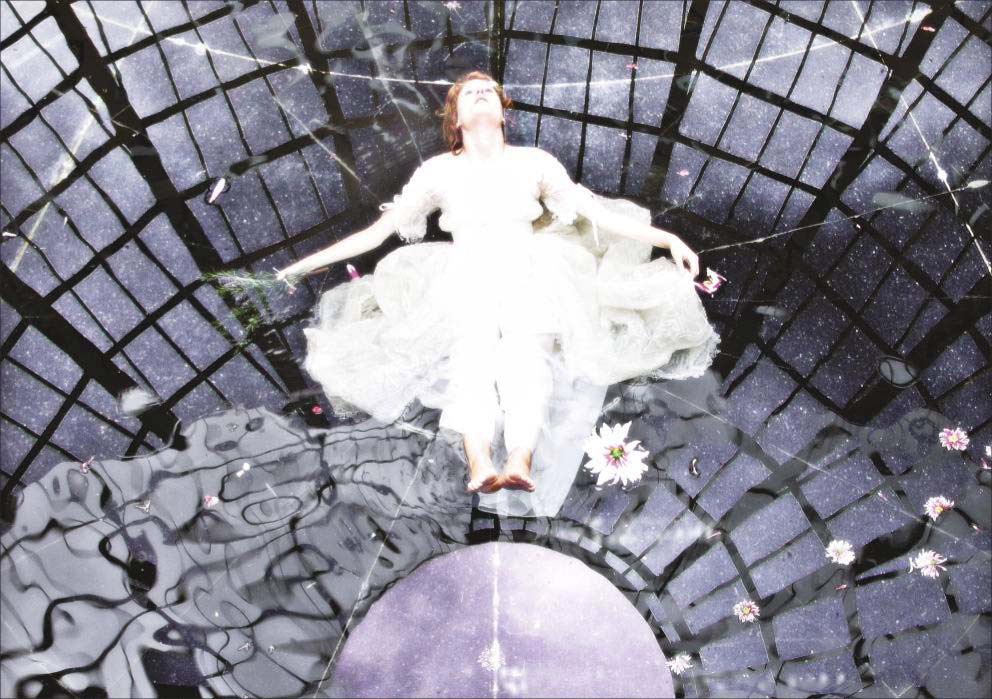
THE MAGNIFICENT OBSESSION
MartRovereto, 26th October 2012 – 6th October 2013
The Museo di Arte Moderna e Contemporanea di Trento e Rovereto is to celebrate its tenth anniversary through an exhibition that redraws the relationship between its collections and the public, reflects about its heritage and embarks on a new way of observing the latter.
The Mart’s rich collections have often been presented in thematic exhibitions, with a focus on a particular circumscribed group. The anniversary exhibition instead aims to construct a more extensive overview of the collection. About 1200 works will enable the public to explore the Mart’s holdings in their integrity and variety, offering an experience that will have a fresh and unexpectedly powerful impact on visitors.
Frequently the taste directed by the obsessions typical of every collector has directed the creation and development of many of the collections donated or loaned to the Mart.
This is the starting point for “The magnificent obsession”, an exhibition that will last almost an entire year, from 26th October, 2012, to 6th October, 2013, and will fill the whole of the Mart’s second floor. An unprecedented project for the Mart, this exhibition has been defined with an accumulation of adjectives by its director, Cristiana Collu: “Self-taught, water-diviner, auto-da-fé of works. Victim or protagonist, recomposed collection, disturbing and provocative, maniacal and fetishist. Obscure object of desire. Secret, sharing, intoxication, celebration. Giddiness of blending”.
In organising “The magnificent obsession”, the Mart has made use of all its in-house skills, in what has been a real team effort. The curators and conservators involved are Nicoletta Boschiero with Veronica Caciolli, Margherita de Pilati, Duccio Dogheria, Daniela Ferrari, Mariarosa Mariech, Paola Pettenella, Alessandra Tiddia, Denis Viva and Federico Zanoner.
“The magnificent obsession” will offer a vision that is radically free of any temporal dimension; the works will be placed alongside each other in line with a criterion that might be defined a “preview of the present” or “archaeology of the future”. The layout of the exhibition is indeed chronological in scope, but in reality proceeds in major thematic shifts. The works are presented without any visual hierarchy, mixing the collections and highlighting the differences between categories. In a certain sense, it will constitute a re-evocation of the spirit of the 19th-century salons, exhibitions that represented a different way of looking at works of art. “The magnificent obsession” will offer a sensitivity close to the criteria of collecting and the visual conditions of reality, rather than the presumed neutrality and ascetic nature of modern and contemporary exhibition spaces. At the same time, the exhibition can be read as an account of the activities concerning the collections: conservation, restoration, institutional relations and study. These are fundamental and constantly evolving aspects in the life of a museum, which this exhibition will bring to the surface.
It is worth stressing one theme that cuts through the whole exhibition: that of a striving for the identity of the museum itself, which is marked by its own dynamism: starting with the works of Andrea Malfatti and running through the 20th century to arrive at Richard Long’s “Trento Ellipse”, made with porphyry from the Trentino.
For the same reason, “The magnificent obsession” houses works planned and made by contemporary artists who appear, offering their own interpretation of the historic succession of works: from the residence of Paco Cao, to special guests Emilio Isgrò, Liliana Moro, Christian Fogarolli and Paolo Meoni.
The exhibition layout
“The magnificent obsession” begins with a room reconstructing the studio of Andrea Malfatti, a sculptor from the Trentino: this is his gipsoteca or plaster cast gallery, the first real nucleus of a collection donated by the artist to the city of Trento in 1912. A nude holds a pose in the studio, while the following rooms introduce the theme of the portrait in painting which, with the room dedicated to graphic art, constitutes an important nucleus of the works conserved in the museum.
The developments of the major art movements are represented through both works and documents: Futurism, for instance, is evoked in its most genuine and revolutionary form, with the 1909 manifesto by Filippo Tommaso Marinetti on display and evoking the setting invented by Fortunato Depero for the International exhibition of modern decorative and industrial arts in Paris in 1925.
The history of Futurism runs in parallel to that of the First World War; a video by Gianikian and Lucchi lays bare the tragedy of the conflict.
The 1930s were a key decade for the development of Italian art in the last century. The Mart holds the legacy of a form of collecting founded in those years, which invested in such artists as Giorgio Morandi, Filippo de Pisis and Massimo Campigli, in a close relationship with the market, and in particular with Milanese galleries like the Pesaro or Milione.
A section dedicated to Mario Sironi documents the civil intentions and political and cultural needs of Italy at the time, and the decoration produced for public buildings. These developments were theorised in 1933 in the “Manifesto of mural painting”. This part of the exhibition shows how architecture took on a dominant position in the 1930s, one that was crucial in relation to the other arts: it became the interpreter of the needs for a modernisation that was closely associated with the idea of a “new society”. The wealth of supporting documentation all comes from the holdings of the Mart’s 20th-century Archive, including the collections of Angiolo Mazzoni and of Figini and Pollini. The presence of the Sandretti 20th-century Russian art collection is represented by posters revealing the “encyclopaedic” manner of collecting typical of the 1970s.
After the Second World War, there was a strong shift towards figurative art – which attributed painting a function that was to be highly representative of reality – but also an opposing abstract trend. The dialectic between Renato Guttuso and Emilio Vedova, highlighted in the exhibition by being hung opposite each other, astonishes for the spectacular breadth of contrast between these two trends, so different yet constituting elements of the same ideology.
The language of American art in those same years instead saw the combination of figurative art and pictorial abstraction. Pop Art and Minimalism proved to be the common denominator in the US domination of the art scene of these years. The American myth emerged even more strongly in cinema, and the “Hollywood on the Tiber” section evokes Fellini’s dolce vita with Alcide Ticò’s busts dedicated to movie stars and works of the Roman school of Piazza del Popolo, from Mimmo Rotella to Mario Schifano and Tano Festa.
The ‘nuclear’ Milanese groups, the art of Lucio Fontana and other events influencing both the Informal and the later Kinetic Art correspond to a vision of a modernity marked by a greater sense of exploration but also more apocalyptic and mechanical. The painted surface of the 1960s was often tackled in Italy and elsewhere as a printed page, but giving rise to two parallel developments: that of abstract-modernist formalism – in which the painting declares its two-dimensionality – or the decision to use graphic marks, prints, stencils and other markers.
A certain form of abstraction, present in Italian art since the end of the last war, developed a strong preference for modular geometry, contrasting with verbal and visual poetry. This current, sound-based poetry and mail art, are well-represented in the Counterculture section by collections including archival documents and artist’s books alongside the artworks themselves.
The pictorial figuration and Transavanguardia of the 1980s and 1990s are shown in relation to the production of such graphic artists as Andrea Pazienza and Lorenzo Mattotti, and to cartoons like Cannibale, RankXerox and Frigidaire, created in Bologna in those same years. An expressive, irreverent form of figurative art blending youth culture and punk influences.
To close, the “Worlds and depictions” room shows some works rotating around the concepts of identity and multi-culturalism, highlighting the social differences characterising our planet. The room also offers a series of ‘trans-temporal’ perspectives and points of view, from “Grassello” by Joseph Beuys, one of the first artists to have sought to lessen the gap between art and responsible existence, to the famous photographs of Irving Penn showing inhabitants of Cuzco, and an installation by Christian Boltanski about a group of Jewish schoolchildren in the 1930s, many of whom probably died during the following decade.
This overview closes with a historic work in terms of the subject and involvement of Afghan embroiderers: Alighiero Boetti’s “Mappa”.
The depiction of the landscape aims to give an extended sense of time and space: whether horizon or layer, space and time always indicate the persistence and atavistic existence of nature despite man. The final room in the exhibition, entitled, “Second nature”, symbolically links art, environments and the museum by presenting “Trento Ellipse”, the work created in 2000 by Richard Long for the Mart using a local porphyry.
Artists present from 26th October 2012
EMILIO ISGRÒ CANCELS THE FUTURIST MANIFESTO
Emilio Isgrò’s intervention at the Mart is not an exhibition, not an event, and nor a conference.
It is, rather, a Course of general erasure for schools in Italy, which starts in October 2012 and lasts until 2013, in line with a “choral” procedure the artist will establish from time to time with the director and curators of the museum.
For the start (fixed for 26th October), the artist’s participation will be limited and fleeting, “almost self-cancelling” says Isgrò, “a sort of overture in which the themes will be announced without revealing how they will develop”.
But it will nevertheless be of strong impact, in that the Cancello il Manifesto del Futurismo (I cancel the Futurist Manifesto) work, realised in smaller scale and erasing the front page Le Figaro dedicated in 1909 to Marinetti’s manifesto, will literally paste the walls of the room in which will also appear, like the shadows of a still-possible future, the intonarumori (noisemaking) machine of Luigi Russolo and a series of photographic images linked to Marinetti’s mythology.
“But this is just the prologue”, states the artist, mysteriously, “because in a few months, at an unspecified and unspecifiable date, the Manifesto by Isgrò-Marinetti could be realised in a large size, descending the museum’s stairwell in triumph, like one of those Arab maidens Marinetti saw performing in a belly dance on the banks of the Nile as an adolescent”.
Futurism and the historic avant-garde movements as erasure: this is Isgrò’s point, as in recent years he has suspected that “in making a clean sweep of impulses and utopias in art too, the baby has been thrown out with the bathwater”.
“Nous voulons effacer. Nous voulons revêr. We want to cancel out. We want to dream. These are the only words I allow to emerge from Marinetti’s text”, states the artist, “as a strong sign in the direction of a utopia that is still firmly pursuable by the young; the possibility of growing up in a more human, peaceful world.
Paradoxically, this is something the bellicose Marinetti might suggest if he were still with us today. A Marinetti that would probably not invoke war as the sole hygiene for the world. In short, a Marinetti who is more pacifist than Gandhi. This is the new feature in my proposal compared to the reading that is usually made of Futurism”.
“I very much doubt”, concludes Isgrò, “that Marinetti would still invoke the killing of clair de lune (moonshine) today: because the clair de lune has in effect vanished thanks to the polluting gases in the atmosphere. And he, the son of his epoch but also an exceptionally intelligent man, would be the first to recognise, and so change tack”.
Emilio Isgrò – Biography
Born in Barcellona Pozzo di Gotto in 1937, Emilio Isgrò is one of the most multifaceted artists and intellectual critics of his generation. Famous for his erasures, or works that arrive at a negative image of an initial text via the obsessive and careful black crossings out that sometimes allow a few words to be made out, Isgrò has also dedicated himself to poetry, journalism and drama. He embarked on his career in the early 1960s, immediately adhering to the research through image and text of Visual Poetry, which anticipated some of the themes and intuitions that would subsequently typify Conceptual Art. Over the years, Isgrò also explored other approaches to the visual arts, including installations and his recent “sculpture”, Seme d’arancio (1998), made for his home town. One-man exhibitions of his work have recently been hosted at the Centro per l’Arte Contemporanea Pecci in Prato (2008), the Fondazione Marconi in Milan (2012) and at the Santa Maria dello Spasimo complex in Palermo (2000-2001). In 2007, Alberto Fiz collected many of his writings from 1963 to the present day in an anthological volume.
PACO CAO PRESENTS THE SITE-SPECIFIC “INVERTITO”
We should not be surprised when, in one of the rooms hosting “The magnificent obsession”, we come across fourteen 18th and 19th-century works installed with the painted side turned towards the wall, so that the observer sees only the rear of the canvas.
This is Invertito (Inverted, 2012), the site-specific intervention by the Spanish Paco Cao, who has selected the pictures from the Mart’s collections.
Protected by special wooden cases, they reveal their most hidden side, which reveals stories, annotations, signs of the past and information about their passage through time. Alongside, making good the denied image, there are photographic reproductions of the reversed paintings on a scale of 1:1. The central aspects of contemporary critical discourse slip on the shiny and industrial modernity of their PVC surfaces: the relationship between original and copy, how works of art are considered and how displayed and used in their historical nature but seen through the present.
Among the intentions of the artist, whose work is characterised by a cultivated layering of historical and sociological notions revealing his academic interests, is that of supplying a theatrical interpretation of these Old Masters, working with the canvases as though they were graphic elements, able to manipulate public perception.
Invertito is part of the Gabinetto Psico-Linguistico-Retro-Futurista (Psycho-Linguistic-Retro-Futurist Cabinet), a project focusing on the relationship between artist, artwork and public. Planned by the artist specifically for the Mart and Casa d’Arte Futurista Depero di Rovereto, the Gabinetto Psico-Linguistico-Retro-Futurista consists of a creative platform characterised by the use of multiple disciplines and languages: exhibitions, events and meetings starting from 13th October in Rovereto and elsewhere in the Trentino.
Through the use of a broad range of languages and materials, Paco Cao aims to establish a bond between artist and observer. The interrelation of psycho, linguistic, retro and futurist concepts is the starting point for the PLRF Cabinet, which aspires to generate activities in which these terms are treated directly or indirectly, in accordance with a multidimensional perspective with the aim of creating unusual associations.
In this way, the work of Paco Cao in the context of “The magnificent obsession” is, in its elegant disruptiveness, able to activate a complex reflection about the methods and underlying policies in showing and looking.
Paco Cao – Biography
Born in Asturias (Spain) in 1965, the artist currently lives and works in New York, where he settled in the 1990s after concluding his history of art studies. Cao immediately began working on various artistic fronts without favouring one medium over another, and linking together different disciplines within his work. His artistic processes frequently include a collective dimension and the different cultural identities of social groups. Ever since his initial and provocative Rent a Body project (1993-98) and his more recent full-length film, El veneno del baile (2009), Cao has ranged from performance to cinema, exploring the profound relationships defining the phenomena of social and cultural aggregation or fragmentation. Among his most significant projects in recent years are Look-alike Contest Series (2001-2004), on the theme of individual and public portraiture, and Don’t touch the white woman (2006), which continues his investigation into the depiction of self and of others. In 2011, he exhibited at the eighth Mercosul Biennale and at the Facets of Figuration exhibition at the MoMA, New York.
LILIANA MORO PRESENTS “DICONO CHE LEI”
For “The magnificent obsession”, Liliana Moro (Milan, 1961) has been invited to reflect on the theme of what it means to be a woman.
Her project unfolds in two directions: on the one hand, the artist presents a work of her own, Underdog, a bronze sculpture of environmental size and, specifically, a pack of five life-size dogs the visitor can walk through and observe the different positions and stances of each, intent on observing from afar, attacking or resting to one side.
The underdog is a person or group of persons who in various types of competition, from political to sporting ones, we expect to lose. The artist’s reflection on this loser, a position often pre-established beforehand by the dynamics of the “game”, triggers some questions as to what one actually wins or loses, leading us to consider a possible overturning of the roles or their cancellation. This work and these reflections acquire all the more meaning when used to analyse the historic role of the woman.
On the other hand and in parallel to Underdog, Liliana Moro has selected a series of works by artists of various generations from the museum’s holdings to compose a many-voiced portrait of the figure of the woman. Among these is her tribute to Ketty La Rocca, a leading artist in the 1960s who worked intensely on this question; one of the works selected, Dicono che lei (They say of her), lends its title to the room.
Liliana Moro – Biography
Born in Milan in 1961, where she lives and works, Liliana Moro first started working with the visual arts at the end of the 1980s, after studying at the Accademia di Brera with Luciano Fabro. In the Milanese cultural melting pot of those years, Liliana Moro was one of the founders of one of the alternative exhibition spaces which revitalised the cultural climate of the city, in via Lazzaro Palazzi. From the outset, the artist won important recognition with an invitation to the IXth Documenta of Kassel (1992) and to the Venice Biennale in 1993. Her work favours no medium in particular, but concentrates on the individual experience of the observer, who is often invited to go beyond what is visible and reduced to essentials by the artist. Among her personal exhibitions in public spaces so far, there have been those at the ARC Museé d’Art Moderne in Paris (1993), at the MUHKA in Antwerp (1996) and at the Istituto di Cultura Italiana in Los Angeles (2007).
CHRISTIAN FOGAROLLI PRESENTS “ANTENATE BESTIE DA MANICOMIO”
The works by Christian Fogarolli exhibited in “The magnificent obsession” at the Mart di Rovereto are the continuation of the Lost Identities. Human=Animal project realised for DOCUMENTA (13) curated by Carolin Cristov-Bakargiev in Karlsue Park, Kassel.
The group of works on show at the Mart, part of a study of criminal photography from the beginning of the 20th century, started in early 2011 in the spaces of the former mental asylum of Pergine Valsugana in Trento (1882-1981).
These works result from a photographic investigation and archival research and take the form of photographs, in some cases modified by overlying paint, created on the basis of the study of primary sources (clinical dossiers and diaries, private letters, documents) seeking to maintain the archival link between all the elements. The research highlighted a close analogy between the images drawn from the archive and European descriptive, criminal or judiciary photography. In printing the photographic plates, the artist has plunged into the introspective dimension of unknown lives, finding aesthetic values in these faces and bodies that are closer to art than psychiatry. Images defined as sacred, just like the iconographies of martyrs and saints and which can today be read as the recorded images of the scene of a crime or of the immense archives of a rogues’ gallery in the eternal distinction between victim and tormentor.
Christian Fogarolli – Biography
Born in Trento in 1983, Christian Fogarolli graduated in Sciences of Cultural Affairs from Trento University. Since 2008, he has developed a painterly style marked by various expressive techniques and has at the same time frequented a Master’s course in Study, Diagnosis and Restoration of Paintings at Verona University, expanding his artistic interest to include everything from the techniques of Old Masters to contemporary innovations. Central to his research is the human being and his dimension within the contemporary context, at both an individual and social level. The figures depicted seem often to reveal to belong to an undetermined past catapulted into contemporary society. In some cases, the works arise and develop from studies of graphic sketches, while in others from a photographic and archival research. Waste dumps, old documents, prints, photographs and objects exhumed to clarify the sense of time and reduce the obese dimension of the present. Christian Fogarolli has exhibited his works at dOCUMENTA (13) (Kassel, Germany).
PAOLO MEONI PRESENTS
UNITA’ RESIDENZIALE D’OSSERVAZIONE
Paolo Meoni presents Unità residenziale d’osservazione (Residential observation unit) in the rooms of “The magnificent obsession” exhibition.
The work takes the form of a video made using a stop motion technique from a montage of 1600 digital photographs. It was created as an a posteriori project: the artist has selected the images from a part of his own personal photographic archive dedicated to workplaces in urban settings. The video shows buildings under construction or refurbishment, industrial areas and suburbs. What Meoni is interested in in these places is the potential for a “profound structural mutation, in which old and new are closely mixed, and the city as a whole is no longer visible”.
Unità residenziale d’osservazione is also a reflection of the way in which the transformation of metropolitan peripheral areas influence the borders and very identity of broader urban areas.
Paolo Meoni – Biography
Born in 1967 in Prato, where he lives and works, Paolo Meoni uses video, photography and other techniques for acquiring and manipulating images to study the changing faces of a territory.
After participating in 2008 in “New Delhi: Urban Landscapes”, at the Centro per l’Arte Contemporanea L . Pecci in Prato and at the Italian Cultural Institute of New Delhi, in 2010 Meoni had personal shows in the Casamasaccio, Dryphoto and Die Mauer galleries and took part in “Palinsesti 2010 – Storyboard” at San Vito al Tagliamento and in the 32nd Mediterranean Film Festival of Montpellier.
In 2012, he participated in the MAN collective in Nuoro, “L’evento immobile. Sfogliare il tempo”, at the selection for the Terna Prize at the Multimedia Art Museum in Moscow and in “Mondi”, again at the Die Mauer gallery in Prato.
MartRovereto
Corso Bettini, 43 – 38068 Rovereto (TN) – t. 800 397760 – www.mart.trento.it
.-.-.
La magnifica ossessione è la mostra che il Mart ha immaginato pensando al Museo, alla sua missione e alla sua vocazione, agli artisti, ai collezionisti, a tutti coloro che lavorano intorno ai nostri progetti e che di fatto li rendono possibili qui, in questa città e in questo territorio così generoso e ospitale, che dieci anni fa ha raccolto una sfida che si rinnova ogni volta, e che con orgoglio e coraggio viene portata avanti con responsabilità e consapevolezza, con i piedi per terra senza però desistere dall’invenzione, dalla fantasia e dalla creatività, dall’indagine e dalla ricerca di nuovi modi di raccontare la nostra storia.
Cristiana Collu
LA MAGNIFICA OSSESSIONE
Mart Rovereto, 26 ottobre 2012 – 6 ottobre 2013
NUOVI ARTISTI LA MAGNIFICA OSSESSIONE
Emanuele Becheri, Giuseppe Caccavale, Andrea Mastrovito e Michele Spanghero sono i quattro artisti chiamati a misurarsi con la mostra del Mart “La magnifica ossessione”.
Inaugurazione 8 febbraio 2013 alle ore 18.00. Apertura al pubblico dal 9 febbraio.
A partire dall’8 febbraio 2013 i quattro artisti italiani presenteranno altrettanti lavori ispirati al tema della mostra, nelle sale del secondo piano del Mart di Rovereto. I loro interventi si aggiungono a quelli di Paco Cao, Emilio Isgrò, Paolo Meoni, Christian Fogarolli e Liliana Moro, presentati in occasione dell’apertura della mostra, il 26 ottobre 2012
Emanuele Becheri (Prato, 1973) lavora sull’idea di disegno e di traccia, come processo di contrasto fra luce e oscurità, ma si esprime anche attraverso video e la performance. Al Mart porterà alcune sue opere a parete che verranno allestite nella sala “La Conquista dello spazio”, dedicata all’arte italiana degli anni Cinquanta e Sessanta. I quadri della serie delle Impressioni di Becheri si basano infatti su un unico gesto creatore – erede dei “concetti spaziali” di Lucio Fontana: su una carta adesiva distesa e pressata su una parete, restano impressi segni non premeditati dalla volontà compositrice dell’autore.
Giuseppe Caccavale (Afragola, NA, 1960), formatosi presso l’Accademia di Belle Arti di Napoli, è ora docente di Arti murali presso l’Ensac di Parigi, e non a caso la sua opera al Mart instaurerà uno speciale rapporto con la superficie parietale. Caccavale esporrà nella sala del “Segno inciso” l’opera Osso, una serie di disegni preparatori per affresco, realizzati su carta da spolvero e derivati da tecniche tradizionali. A Caccavale interessa il momento latente del disegno, la “costruzione scheletrica” da cui scaturisce, attraverso il trasferimento sul muro, la composizione finale dell’affresco.
Andrea Mastrovito (Bergamo, 1978), si diploma presso l’Accademia Carrara di Bergamo nel 2001. Il suo percorso è costituito dalla reinvenzione degli spazi della pittura, sia in forma bidimensionale o più spesso ambientale, dove la carta rappresenta il medium privilegiato. La costante ricerca plastica di Mastrovito sul segno è declinata nella sala “Hollywood sul Tevere” con l’opera site specific Sotto il vestito niente, ma proprio niente: una bianca e sensuale Marilyn è mostrata sul punto di essere trascinata via dall’eccessiva intensità del getto d’aria dei ventilatori sottostanti. E’ un’installazione citazionista e ironica, chiaramente ispirata alla celebre scena del film Quando la moglie va in vacanza di Billy Wilder.
Michele Spanghero (Gorizia, 1979), conduce una ricerca che spazia liberamente tra percezione acustica e percezione visiva. Per il Mart, Spanghero presenta un progetto sonoro che mira a far “risuonare” le sculture della prima sala della mostra, la “Gipsoteca Malfatti”, ricavando dall’interno dei gessi dello scultore ottocentesco Andrea Malfatti un suono, che verrà diffuso nell’ambiente circostante. Il lavoro di Spanghero allude a quella coralità che la disposizione delle statue ottocentesche sembra suggerire ai nostri occhi.
Opening times: Tues. – Sun. 10 a.m. – 6 p.m. Fri. 10 a.m. – 9 p.m.
Information T. 0464 438887 – info@mart.trento.it – www.mart.trento.it
Mart public relations director: Flavia Fossa Margutti
The Mart wishes to thank: Provincia autonoma di Trento, Comune di Trento, Comune di Rovereto
In partnership with UniCredit, Vini de Tarczal
Technical partners: Cartiere del Garda, Trentino Marketing, Zanotta SpA
For the educational activities: Casse Rurali Trentine

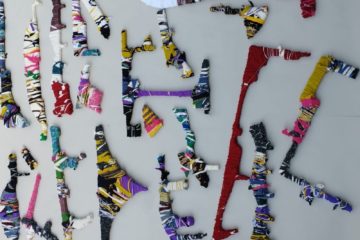
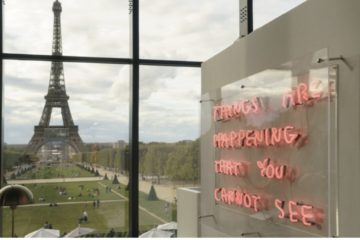
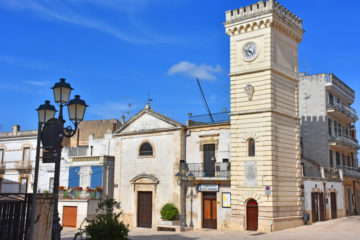
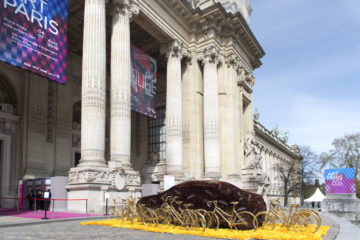

No Comment